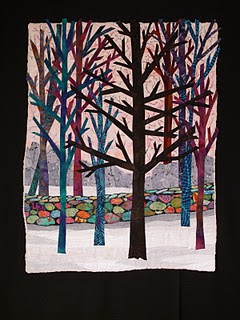Eli gets his Green Belt
Wednesday, February 28th, 2007Here, Eli waits his turn to test.
And Joshua racks up a few more wins at Saturday’s wrestling meet. (An aside: tried to post this yesterday, but blogger wasn’t cooperating! Hope to add quilty /fabric content on Friday– I made a new blouse from quilting flannel, and today I head to Mount Desert Island to speak to quilters from SouthWest Harbor, the rest of Mt. Desert Isl –home to Bar Harbor and Acadia National Park– and from Ellsworth, just over on the coast.)
Monday night, however, was Eli’s night. He and several others, kids and adults, tested for new belts at Tae Kwon Do karate. Stripes, intermediate ranks as you progress from one belt to the next, may be awarded during regular teaching sessions or at testing sessions. Here, Eli is performing a kata, a series of steps simulating moves one would take against multiple attackers:
Then, the students perform one-steps with a fellow student (in this case Adam, who also got his green belt and is Eli’s class at school!):
Eli is also studying Ishinriyu Japanese style karate with 4-th degree black belt Sensei Pete Bishop. This is a great honor for him, since Eli is really the first kid Pete has invited to study with him; usually he works only with red belts (which is one under black) and above! The two worked on what is called “environmentals”, a sequence of steps practiced with an “attacker” so you can see exactly what situation is being simulated. Here is Eli with Sensei Pete:
When you need to re-tie your belt, or get a new belt, it is considered respectful to turn one’s back to the ranking belt to make any adjustments. Here, Eli has been awarded his green belt, and is tying the knot:
Then, everyone bows to the newly advanced practitioner:
And for an update on wrestling season:
Saturday was the six-team meet (most are 3-team meets), including the ever-awesome Mount Ararat school. Of Joshua’s five matches, one was a default (no one in his weight class on the opposing team, counts as a “win” for Camden-Rockport), one was a loss to the boy from Mount Ararat—not only do they have a huge team, they are all good, and THREE were pins! Yeah Sport! Here’s the opening move in one match:



